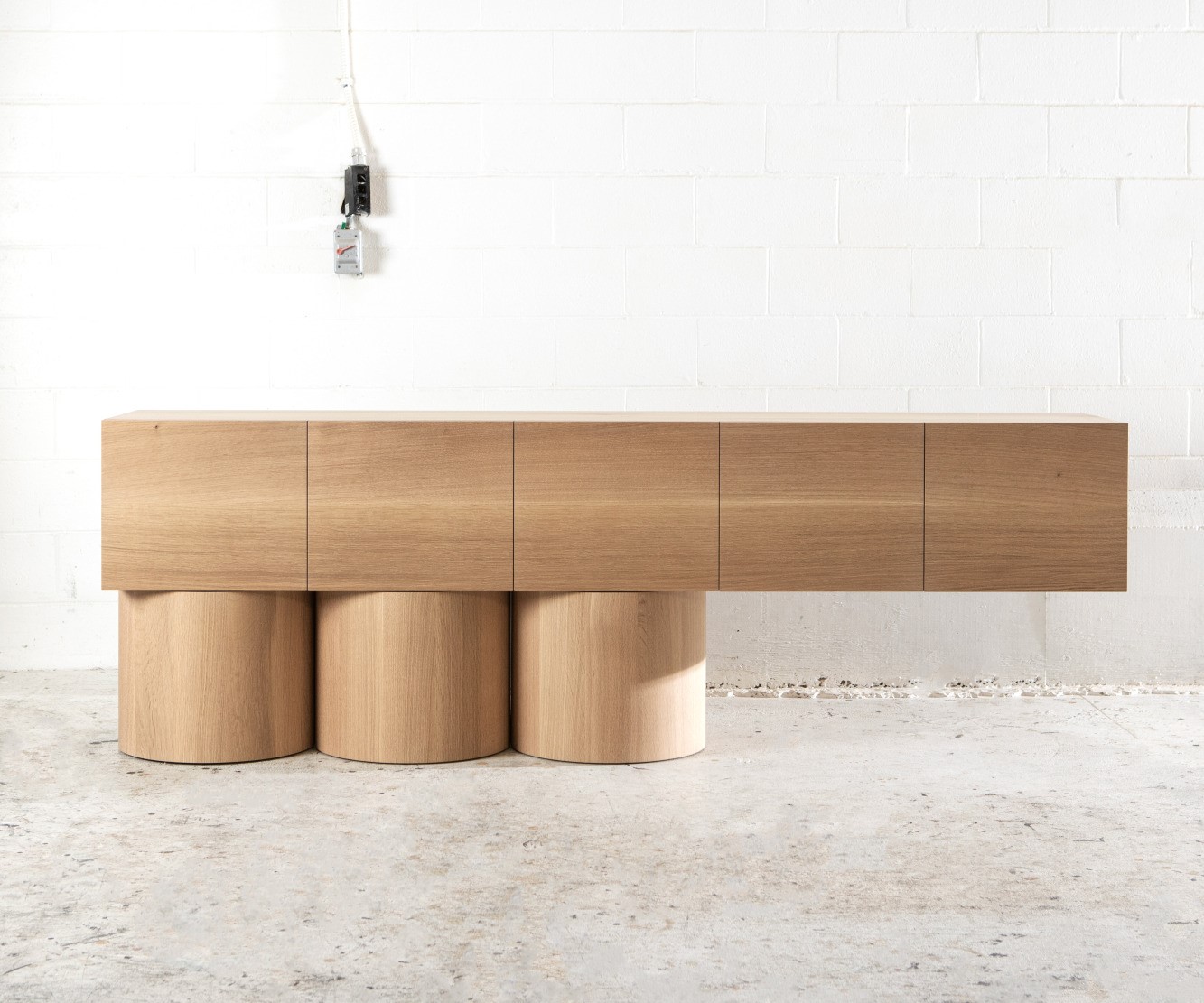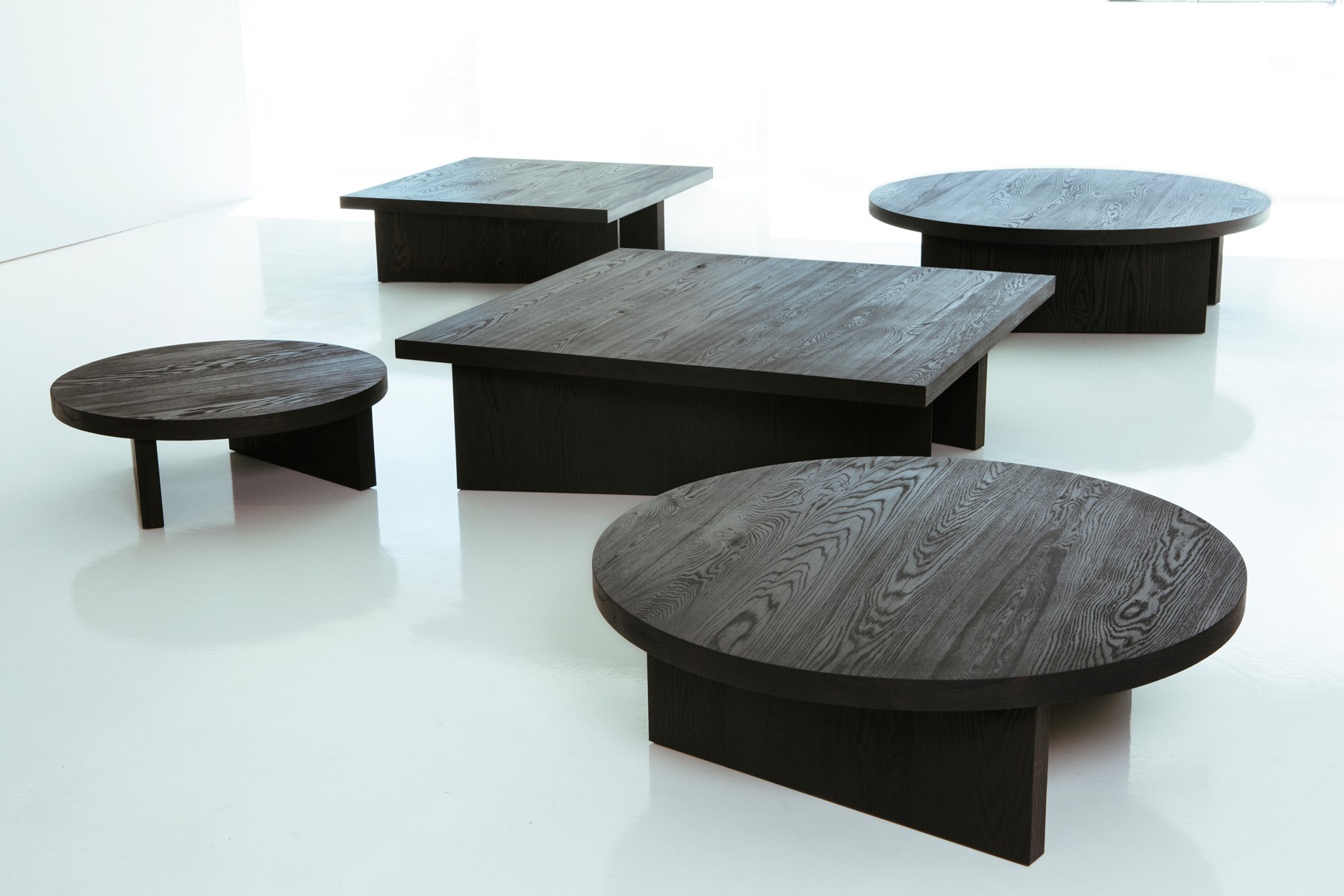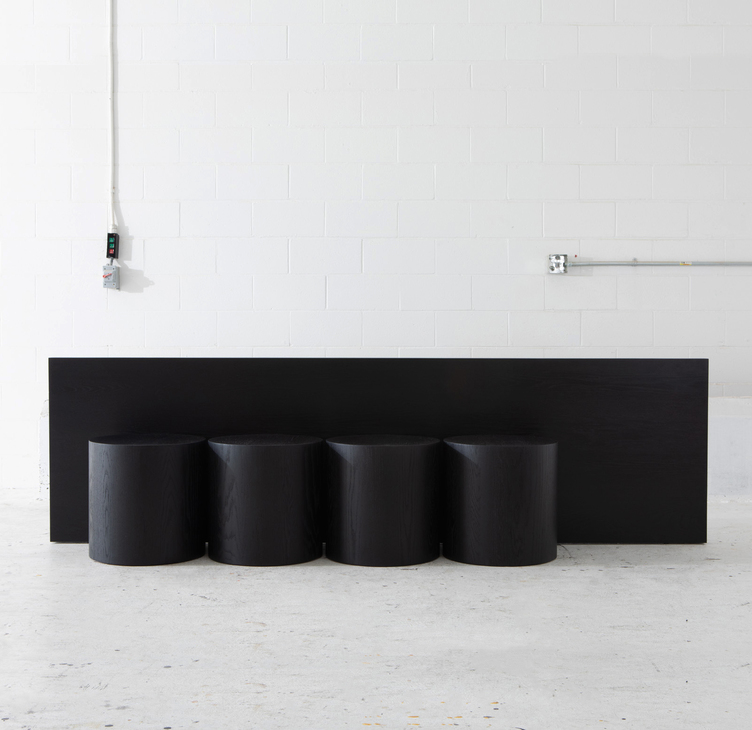The Vancouver-based master craftsman reflects on almost 20 years of creating wonder from wood
Vancouver-based furniture designer and master craftsman Christian Woo launched his eponymous studio in 2006, and in the near-20 years since, he’s established himself as a maker of compellingly uncomplicated wood pieces that strike the balance between subtlety and drama.
Woo’s modern and shapely Brutalist-influenced works include the clever Caterpillar Bench, the intriguingly geometric Diptiq Table, and the asymmetrical Noga Console Cantilever. The thoughtful designs speak to Woo’s desire to give his chosen materials full attention; a selection of sustainably harvested, Forestry Stewardship (FSC) approved woods including striking White Ash and sumptuous Natural Walnut and Black Oak. The arresting complexities of their grain patterns are optimally spotlighted through the considered, hand-crafted silhouettes that have become a signature of Woo’s austere design style.
Upon introducing his studio, Woo began to build interiors and worked with local designers and architects to define his aesthetic. And though he redirected his full attention to furniture design ten years ago, Woo remains an enthusiastic collaborator. He was recently at Salone del Mobile Milano to introduce his new collection for Zanotta, and he also worked with Omar Gandhi Architects to craft a lush dining table for Fisher & Paykel’s Toronto Experience Centre, which opened earlier this year.
Given all this generating momentum, Woo was kind enough to speak with us about his early design days and how he arrived at this exhilarating time.

What was your first exposure to design and the art of craft?
In terms of my work as an artist, my grandfather was the major inspiration for me to enter into this life. He lived in Toronto and was himself an artist – a sculptor. I would usually visit him once a year when I was growing up; he lived in Leslieville, and I have a lot of memories about that part of the city. Funnily enough, he lived at the corner of Queen and Vancouver.
He was my mom's stepdad, so he was not my biological grandfather. But he was somebody who filled that role, and we really connected. He was a fantastic guy, and we bonded through creativity.

Christian Woo’s Noga Console Cantilever is robust and statement-making, while maintaining an air of subtlety thanks to its discreet design.
Did you do a lot of making together? Or was this more talking about design and art?
He was always building. We would do renovation projects at his house over the years, and that resulted in us building neat things. I think he knew that I had an aptitude for working with my hands quite early, and that excited him.
What other life experiences led you to launch your studio?
I didn’t really know what I wanted to do as a career when I was younger, and I never thought working with my hands could become anything for me; I simply thought it was something that I could do.
I studied film and English at post-secondary school, not knowing that what I ultimately want to do was what I’d been doing all along. A week before I was about to start as a mature student at OCAD, and despite me being excited to study there, I decided not to go. Instead, I trained as a cabinet maker prior to opening my studio. I worked in a great shop, and that's where I gained a lot of the skills that could be transferred into furniture making. I began by designing and building things that I liked for myself, and I’ve always been drawn to very simple visually artistic work, whether it was photography or fashion.
I think the fact that I don’t have a formal educational background has been influential too. I didn't study a whole realm of design history, I’ve just always known what I was attracted to and I've remained dedicated to that.

Featured above in stunning Black Ash, the Diptiq series is composed of a group of tony tables that come in a variety of shapes and scales.
How has the studio, and your work, evolved since then?
Initially, I was focused on building interiors and kitchens. I was doing quite well and working on great commissions and with excellent architects and designers. Then I had a cancer diagnosis in 2014, and I was sick for the better part of a year. During that time, I did a lot of reflecting and when I found out that I was going to be okay, I began to think about what I should do with my business. I didn’t want to continue that trajectory because to scale it would be difficult, and I decided my passion didn’t ultimately align with doing that work.
So where did you go from there?
My wife, Talia, has also been a huge inspiration to me. She went to art school in Rhode Island, and she's an incredible artist who has really taught me a lot. With her support, I went to the International Contemporary Furniture Fair in New York in 2015, which was a big turning point in my career. I brought the first table I designed, the Trifecta Table – my take on a very common three-legged table design. I scaled it a little differently and made the look more primitive.
How do you stay inspired? Nature obviously plays a big part.
I’m in a place now where I’m feeling highly charged and motivated. A lot of it has to do with having just been in Milan; everyone I spoke to there seemed quite optimistic. And in terms of nature surrounding me on the West Coast, there's giant mountains and massive fir trees and oceans and whales – being able to see that is good for your soul. And when you feel good, you have more of a chance of being inspired.
Also, I find I'm most inspired when I'm working physically. It's kind of meditative. I've been working with my hands for so many years that when I start to do a task for a project or piece, I know the procedures so well that I'm able to get into a zone where I’m hyper-focused and fixated on what I'm physically doing.

